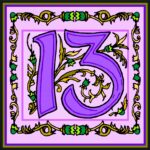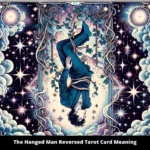The Death Tarot card often elicits gasps and shocked expressions when it surfaces in a reading. But what does it truly signify? Is it an omen of doom, or could it represent transformative potential? It’s intriguing to ponder: what would you change in your life if you embraced the messages this enigmatic card conveys? Dive into the multifaceted interpretations of the Death Tarot card and discover not merely the shadows of despair it might cast but also the light of opportunity it heralds.
To fully grasp the essence of the Death card, one must first disentangle the symbolism that accompanies it. Traditionally depicted as a skeletal figure, often atop a pale horse, Death is seldom meant to be taken literally. Instead, it symbolizes much more than the cessation of life; it heralds endings, closures, and significant transitions. This is a vital distinction—its appearance in a reading often signifies the conclusion of one phase of existence, paving the way for new beginnings.
As we embark on our exploration, it’s crucial to acknowledge the rich tapestry of interpretations layered within this card. The Death card is numbered thirteen in the Major Arcana of the Tarot deck, and its placement among the cards indicates profound life events and the inevitability of change. It beckons us to examine our mortality, urging reflection on what truly matters and what changes we may resist.
One of the most commonly accepted meanings of the Death card is transformation. Just as a caterpillar must dissolve in its chrysalis to emerge as a butterfly, so too do we often need to relinquish parts of ourselves to evolve. This pivotal transition can manifest in myriad forms: a relationship that no longer serves its purpose, unfulfilling careers, or even outdated belief systems that hinder personal growth. When the Death card appears, it poses a playful yet profound question: what in your life needs to be put to rest in order for you to flourish?
Facing Fears and Embracing New Beginnings
Confronting the concept of endings can be daunting. Society often instills a fear of loss—of what we must surrender in pursuit of greater fulfillment. The Death card urges an acceptance of this process, reminding us that every ending is, in essence, a new beginning. The challenge, therefore, lies in shifting our perspective to see death not as a finality but rather as an invitation to rebirth.
In the realm of relationships, the message of the Death card can be both poignant and liberating. It calls for an introspective evaluation of connections that may have run their course. Consider the friendships, partnerships, or familial bonds that have evolved—or stagnated. The transformation suggested by the Death card does not always entail severing ties entirely but may instead involve redefining these relationships. How can you address what no longer serves you? What dialogue needs to occur for renewal?
The Call to Let Go
The process of letting go often evokes a visceral reaction. We cling to the familiar, even when it becomes detrimental. The Death card illustrates that letting go is a necessary component of growth. Imagine a garden overrun with weeds. For flowers to bloom, those weeds must be uprooted. The same principle applies to our lives. This card invites profound introspection, challenging us to ask: what weeds are suffocating the vibrancy of my existence?
Moreover, embracing the lessons of the Death card entails acknowledging the cycle of life. Change is woven into the very fabric of our being. From the changing seasons to the myriad stages of our personal journeys, transformation is both inevitable and natural. By confronting the discomfort associated with change, we cultivate resilience and adaptability—traits that empower us to navigate life’s myriad vicissitudes.
Inner Liberation and Spiritual Growth
Ultimately, one of the most transformative aspects of the Death card lies in its capacity to invoke inner liberation. It challenges us to excavate the depths of our being and confront fears that may tether us to stasis. This journey inward can be daunting but essential. Reflecting on the old identities we cling to may reveal insights about how we can step into new roles, unshackled from the limitations of our past selves.
Additionally, the Death card provides an opportunity for spiritual growth. The acceptance of life’s transient nature can elicit an enhanced appreciation for each moment. Consider how perceptions of impermanence can inspire gratitude. Embracing experiences as fleeting welcomes a deeper sense of presence, transforming our view on what it means to live fully.
The Duality of the Death Card
It is imperative to understand that the Death card embodies duality—pain is often a precursor to healing. While it may resurrect feelings of grief or loss, it simultaneously promotes growth, rebirth, and new opportunities. Like the phoenix rising from its ashes, the card invites you to engage in profound self-reflection and consider how your current hardships, while valid, could also serve as catalysts for meaningful change.
In conclusion, while the Death Tarot card may seem foreboding at first glance, its essence is steeped in transformative potential. By welcoming endings, embracing change, and acknowledging life’s transience, individuals can unlock doors to unparalleled growth and enlightenment. The ultimate challenge posed by the Death card is to recognize that every conclusion births new beginnings—a reality that can enrich our existence in ways we may never have anticipated. What transformative journey awaits you on the other side of fear? The answer lies in the depths of your willingness to let go and embrace the inevitable cycles of life.









Leave a Comment